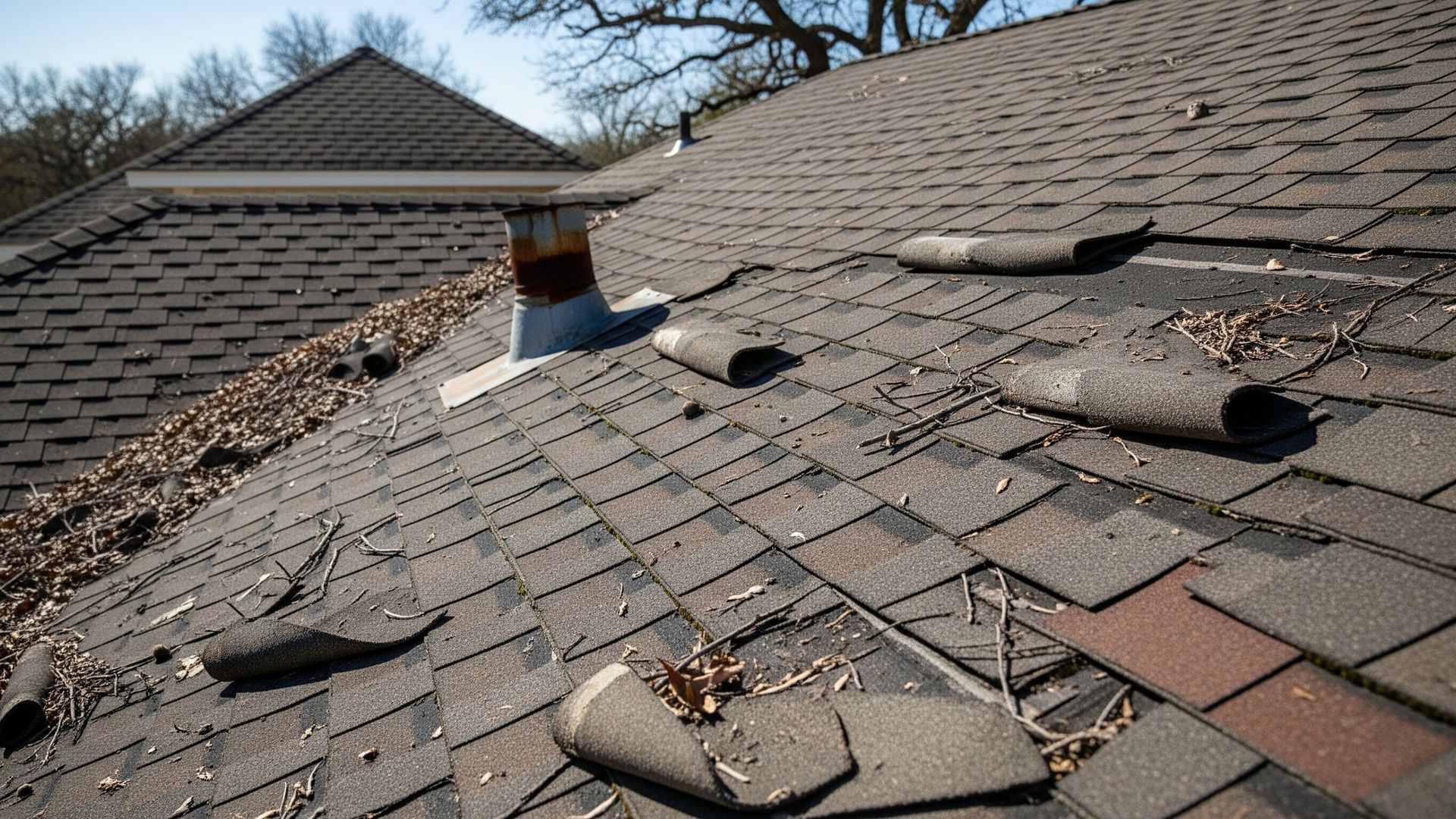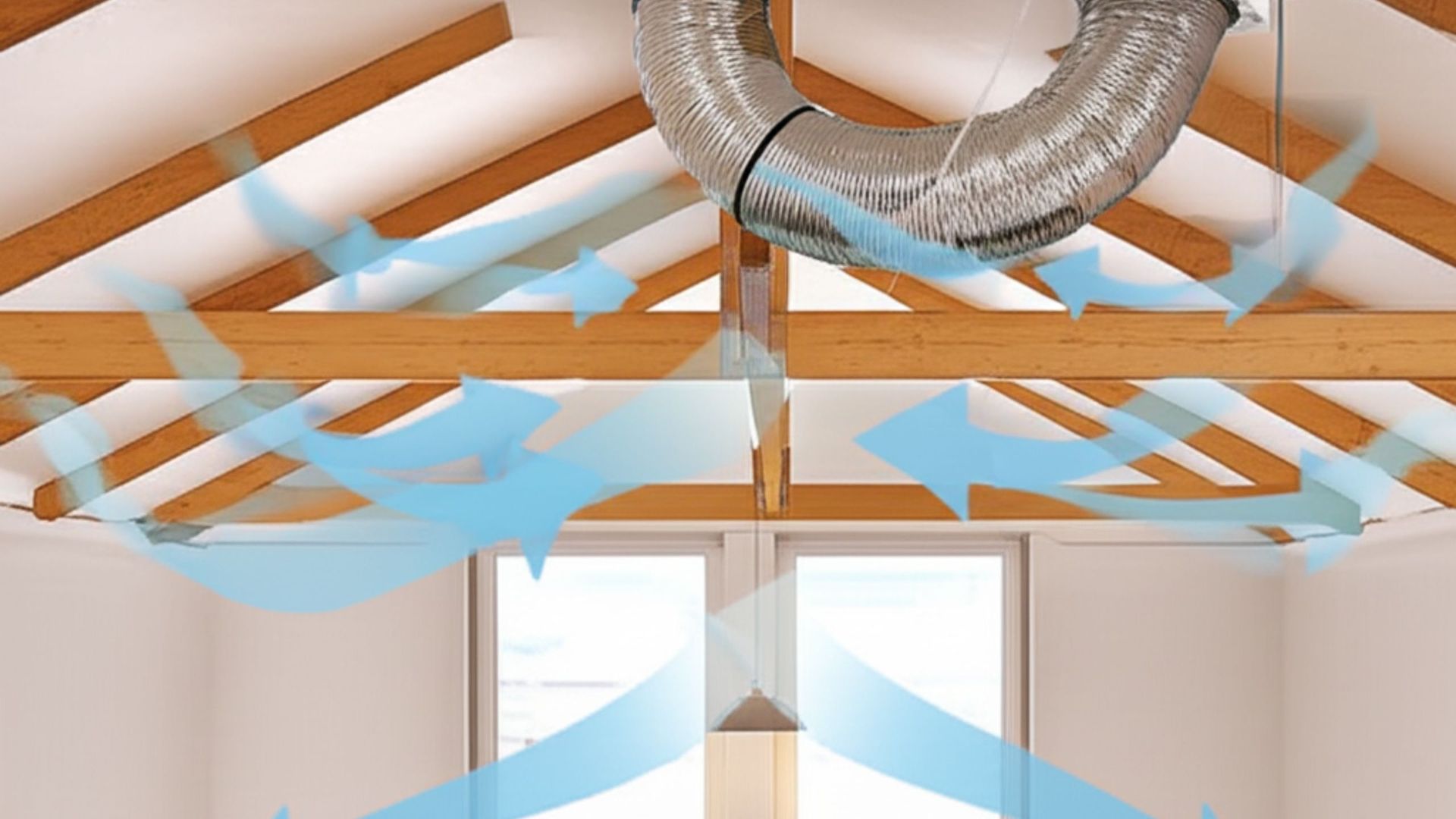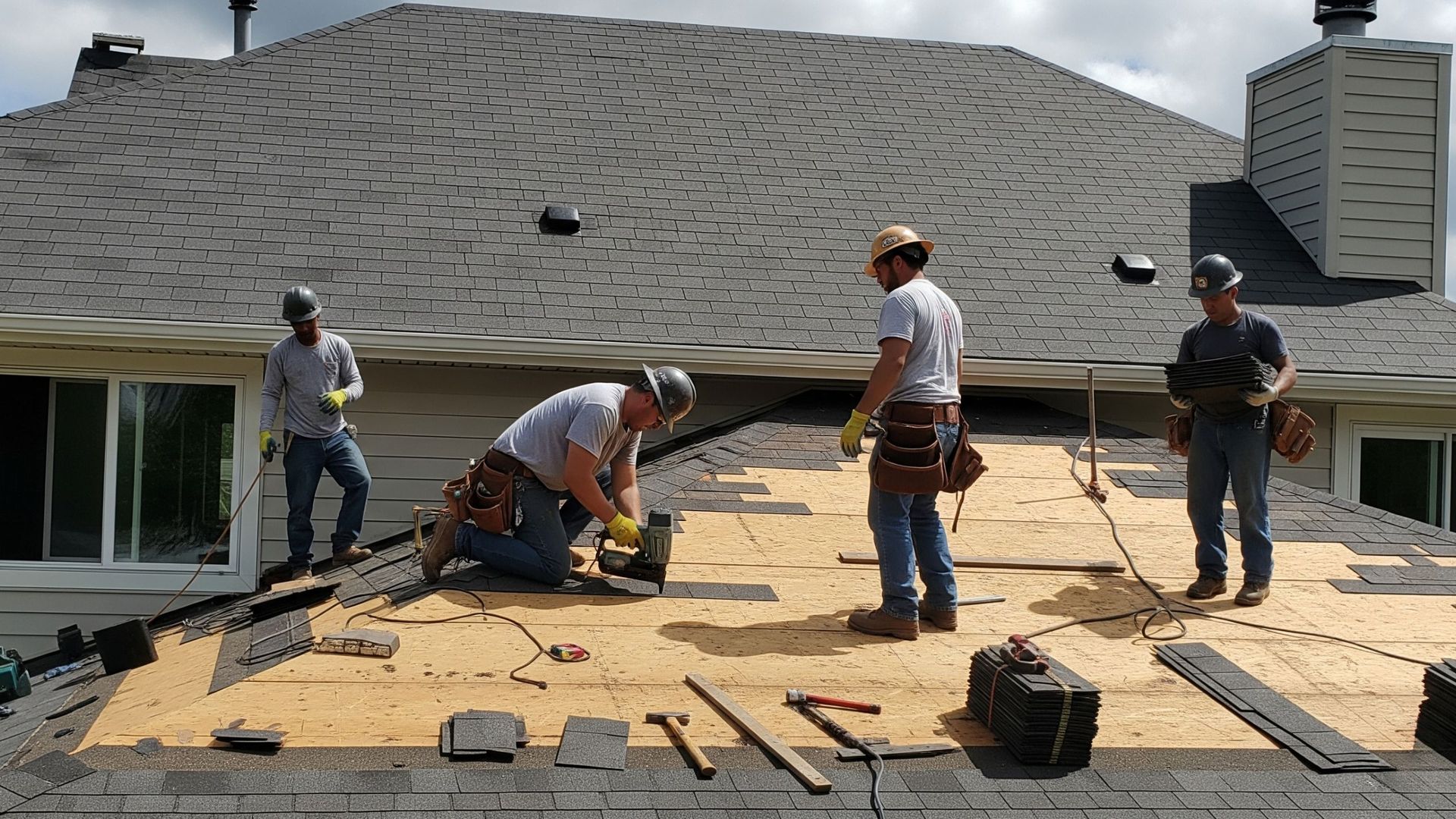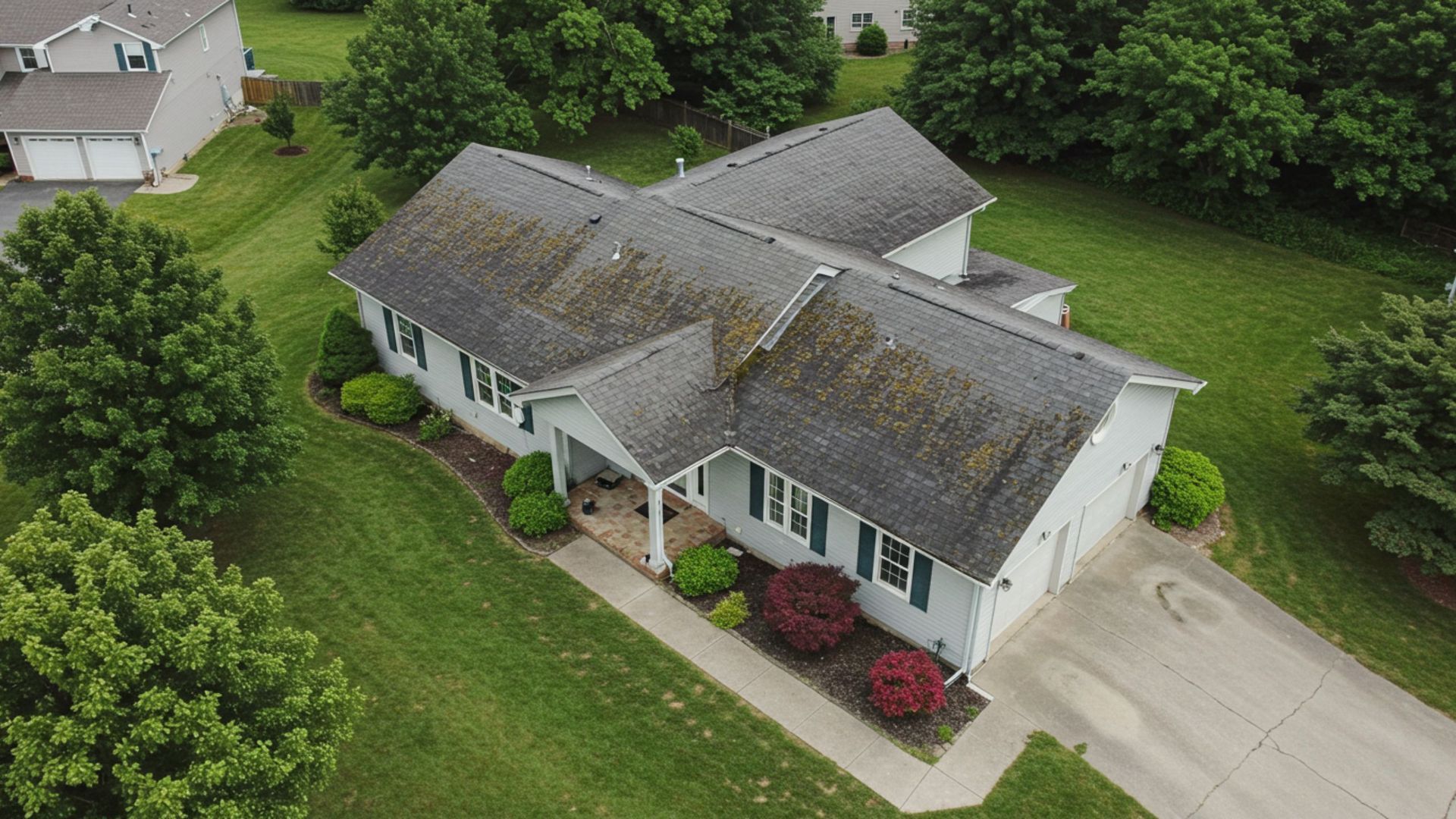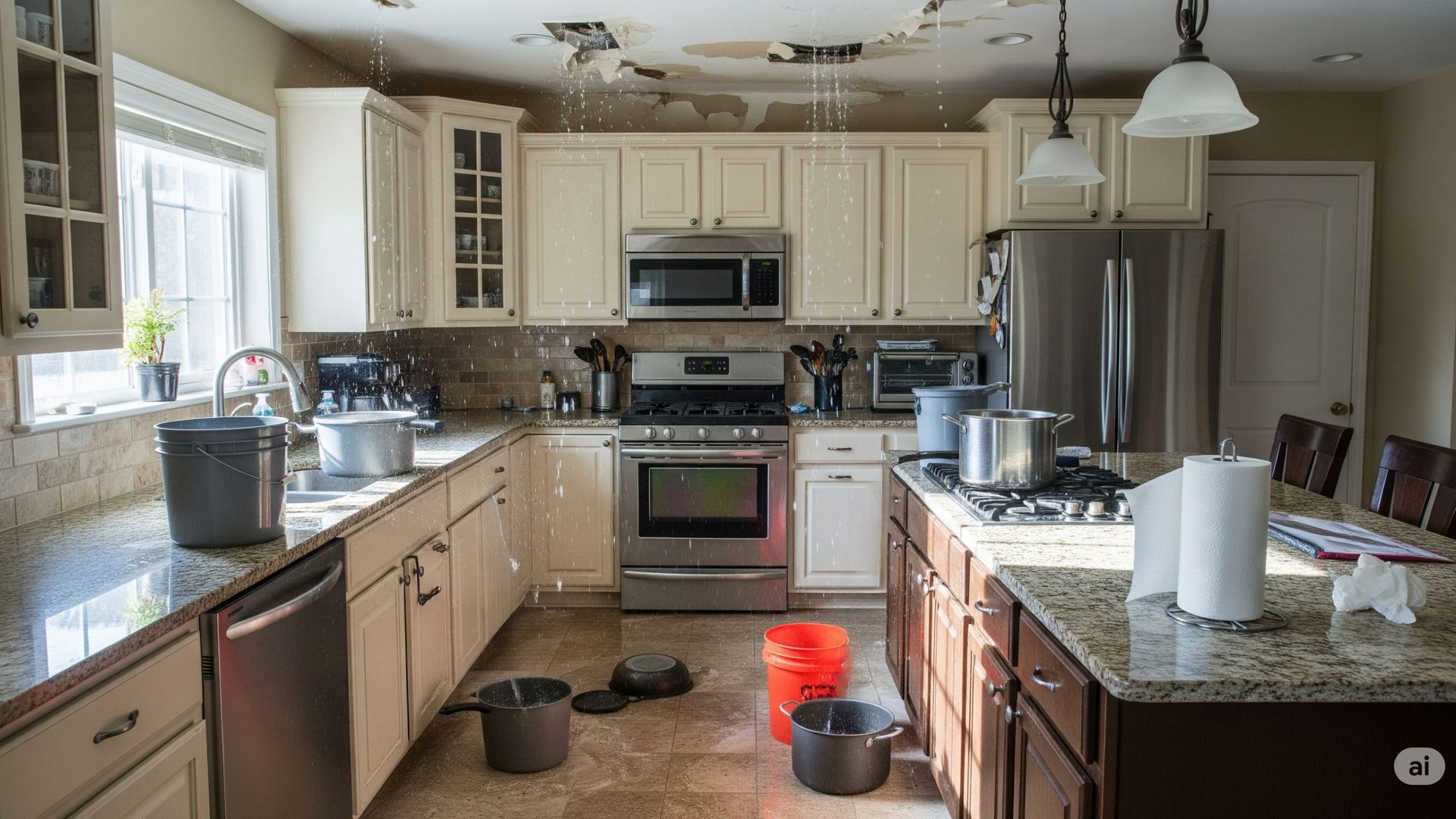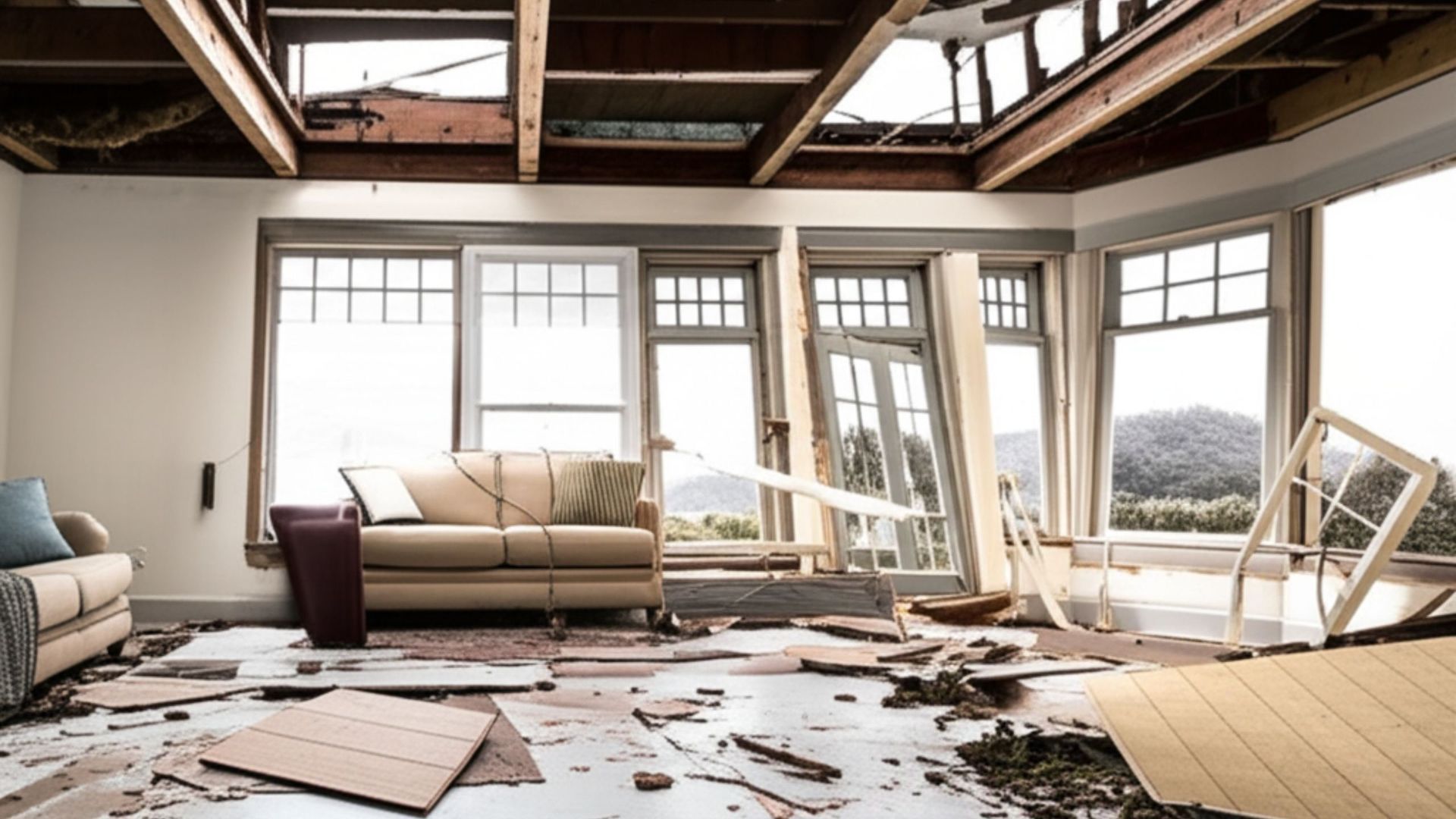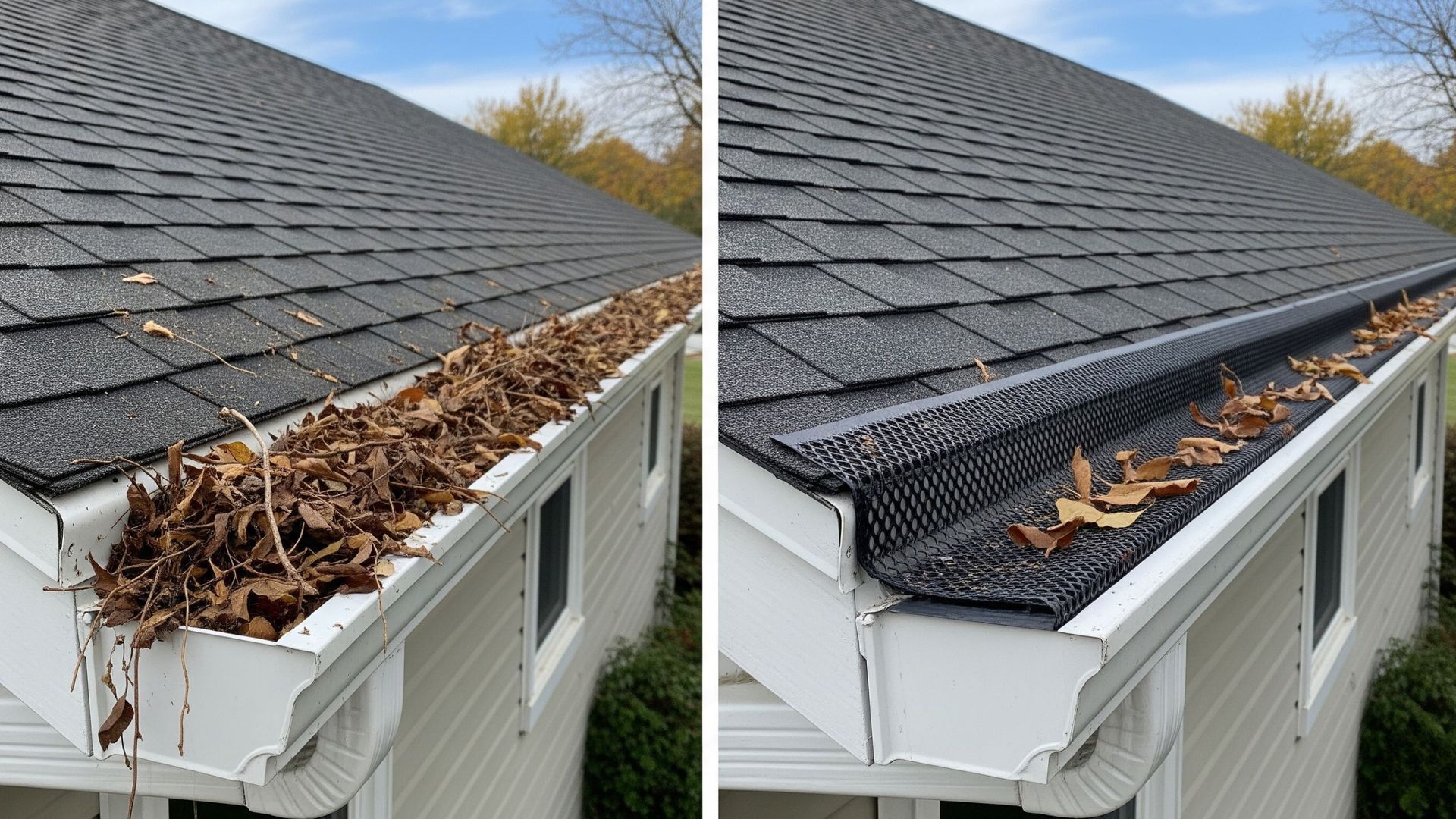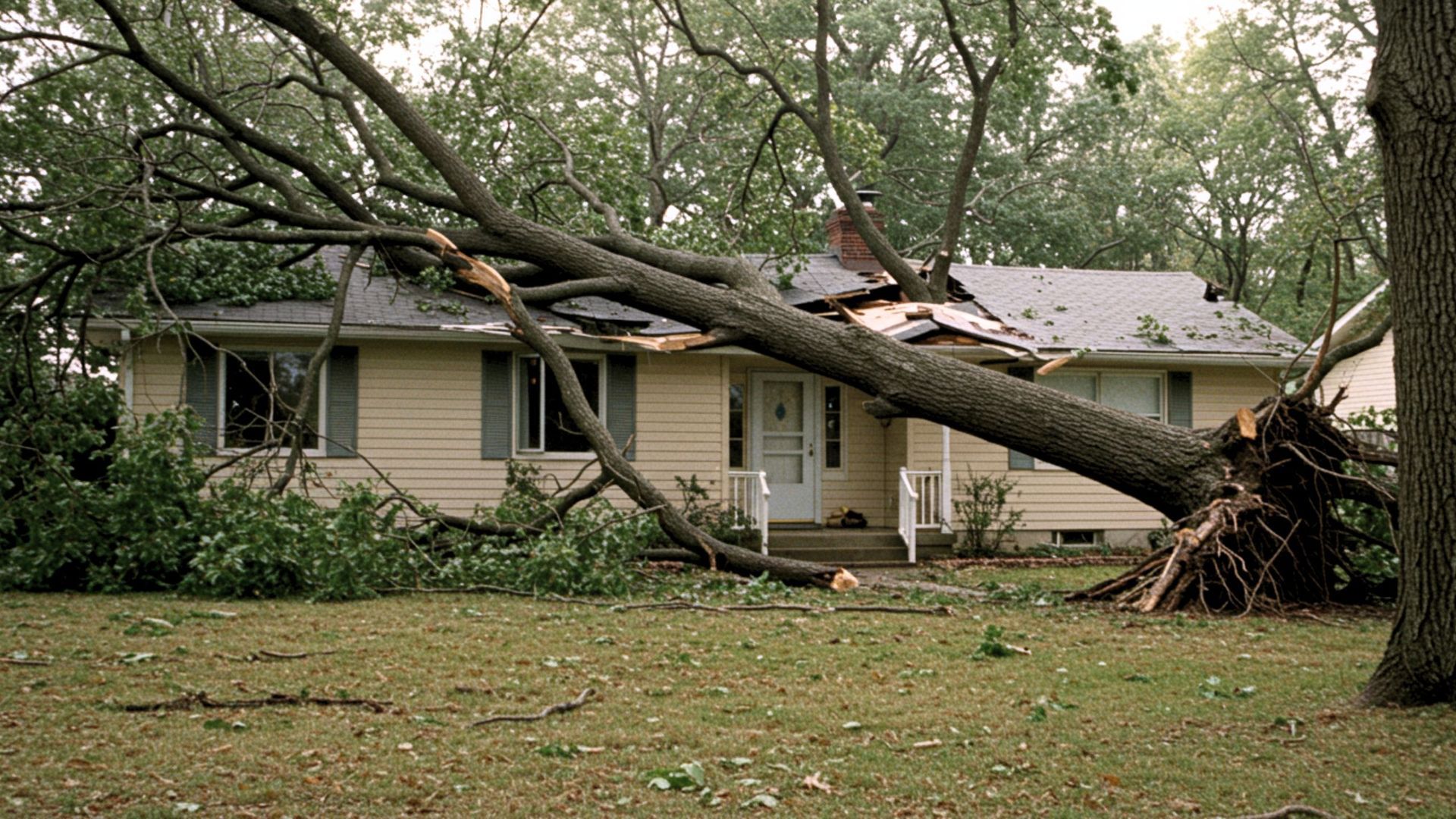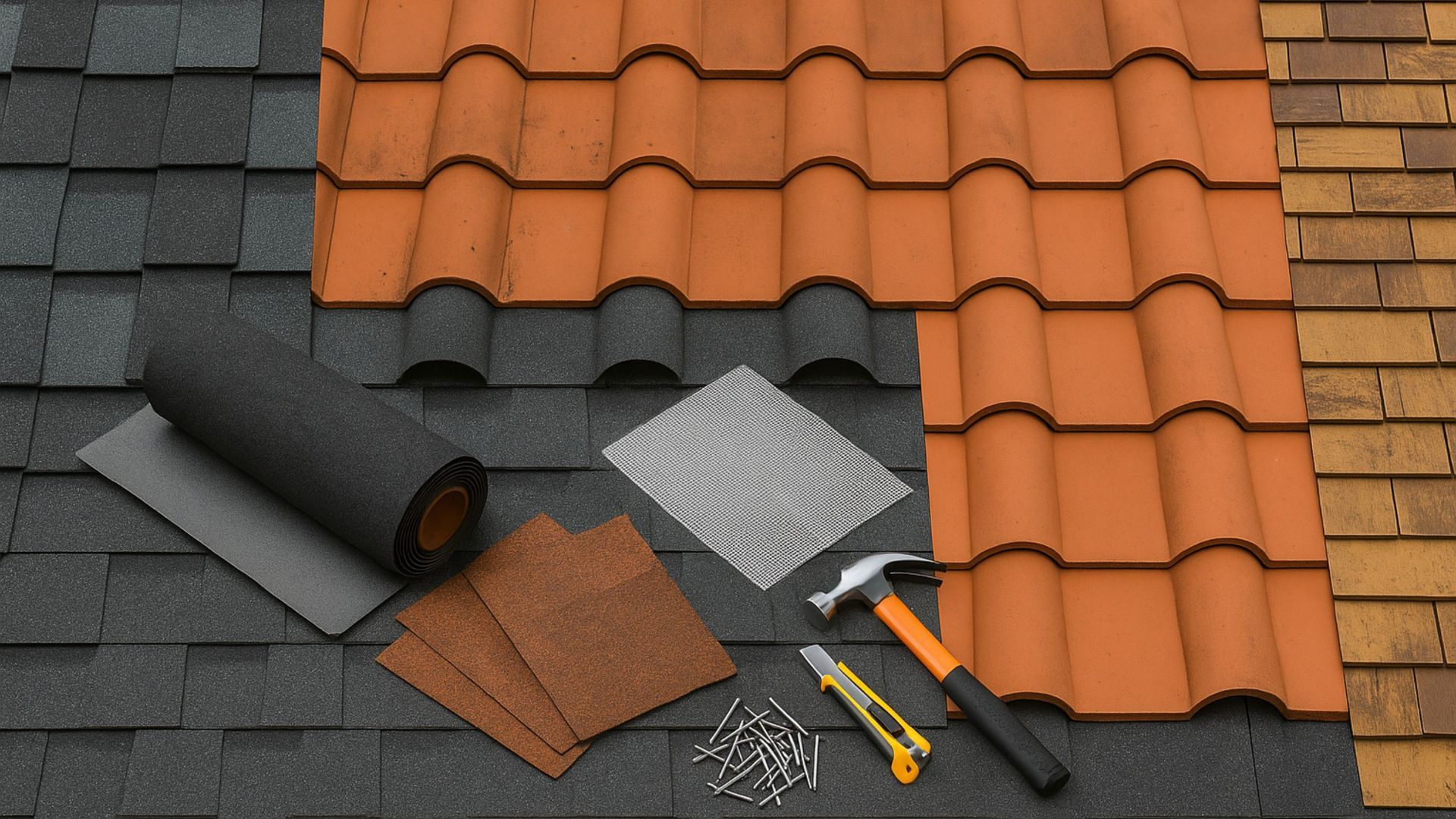What to Do After Storm Damage to Your Roof
Storm season in Texas can be intense. High winds, hail, and falling branches can turn a perfectly good roof into a major source of stress.
If a recent storm has left your roof damaged, knowing what to do next can make all the difference in protecting your home — and your wallet. Here’s a simple guide to help you act fast and avoid further damage.
Step 1: Inspect from a Safe Distance

Once the storm passes and it’s safe to go outside, inspect your home from the ground. Look for signs like:
- Missing or curled shingles
- Debris (tree limbs, branches) on the roof
- Damaged flashing or vents
- Granules collecting in gutters or on the ground
- Water stains on interior ceilings or attic
Do not climb on the roof — hidden damage or slippery surfaces could lead to injuries. Leave that part to the pros.
Step 2: Prevent Further Damage
If you spot leaks or holes in your ceiling, place buckets or containers to catch the water. You can also gently move valuables away from affected areas.
If you have access to the attic, check for wet insulation or beams. If you see daylight through the roof boards, it's likely a sign of serious damage.
Step 3: Document Everything
Before you move or fix anything, take clear photos of:
- The exterior of your home
- Any visible roof damage
- Fallen trees or debris
- Interior water damage
These photos will help when filing an insurance claim or explaining the damage to a contractor.
Step 4: Contact a Roofing Professional

Notify your homeowner’s insurance provider as soon as possible. Share the photos and notes you took, and follow their instructions to start a claim.
Many policies cover storm-related roof damage, but documentation and fast action are key.
Step 6: Schedule Repairs or Replacement
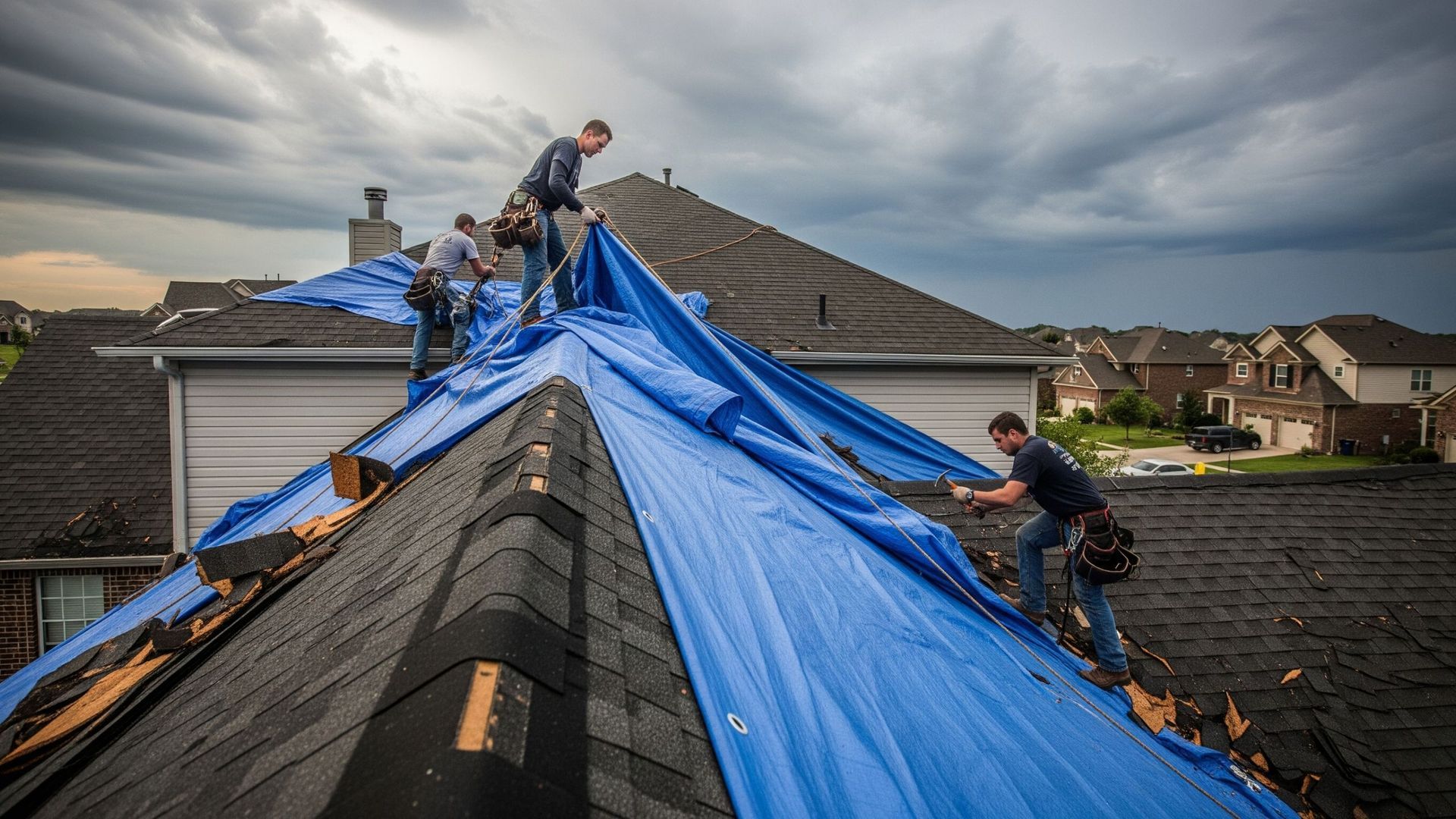
Depending on the extent of damage, you may need either a roof repair or full replacement. A trusted contractor will help you decide the best course of action based on:
- Age of your current roof
- Type of damage
- Future weather risks
In many cases, acting quickly reduces the chances of mold, structural issues, or further water intrusion.
Step 7: Plan Ahead for Next Time
Once your roof is repaired or replaced, ask your contractor about:
- Roof inspections before and after storm season
- Gutter cleaning and repairs
- Stronger materials (impact-resistant shingles, metal roofs)
- Tree trimming or yard maintenance
- Prevention is always cheaper than emergency repairs.
Final Word
Texas storms don’t give much warning — but the way you respond can protect your home and save you thousands. By taking smart, fast action and calling the right professionals, you can keep your home safe and dry, no matter what the skies bring.
